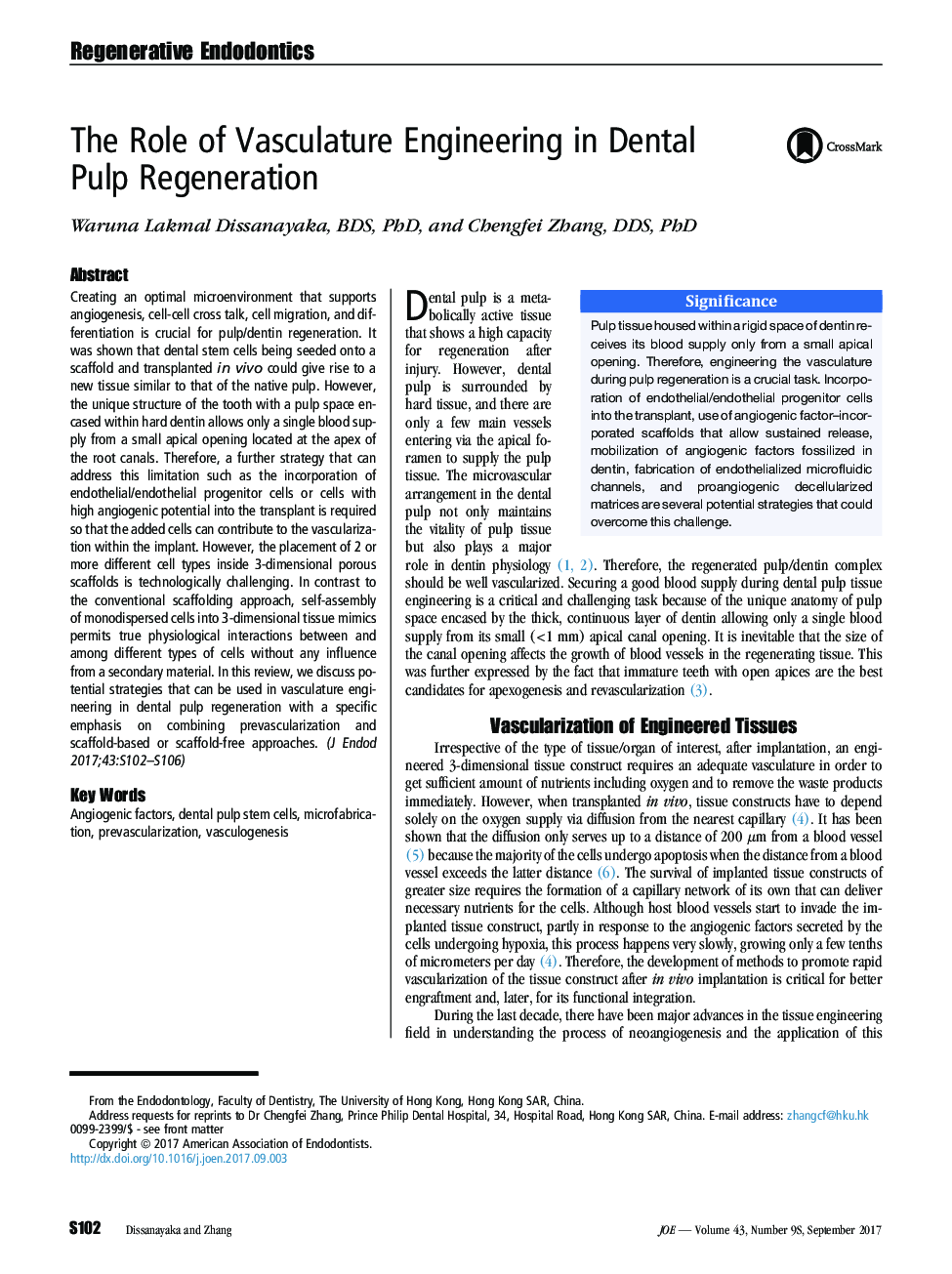| Article ID | Journal | Published Year | Pages | File Type |
|---|---|---|---|---|
| 5640837 | Journal of Endodontics | 2017 | 5 Pages |
Abstract
Creating an optimal microenvironment that supports angiogenesis, cell-cell cross talk, cell migration, and differentiation is crucial for pulp/dentin regeneration. It was shown that dental stem cells being seeded onto a scaffold and transplanted in vivo could give rise to a new tissue similar to that of the native pulp. However, the unique structure of the tooth with a pulp space encased within hard dentin allows only a single blood supply from a small apical opening located at the apex of the root canals. Therefore, a further strategy that can address this limitation such as the incorporation of endothelial/endothelial progenitor cells or cells with high angiogenic potential into the transplant is required so that the added cells can contribute to the vascularization within the implant. However, the placement of 2 or more different cell types inside 3-dimensional porous scaffolds is technologically challenging. In contrast to the conventional scaffolding approach, self-assembly of monodispersed cells into 3-dimensional tissue mimics permits true physiological interactions between and among different types of cells without any influence from a secondary material. In this review, we discuss potential strategies that can be used in vasculature engineering in dental pulp regeneration with a specific emphasis on combining prevascularization and scaffold-based or scaffold-free approaches.
Related Topics
Health Sciences
Medicine and Dentistry
Dentistry, Oral Surgery and Medicine
Authors
Waruna Lakmal BDS, PhD, Chengfei DDS, PhD,
